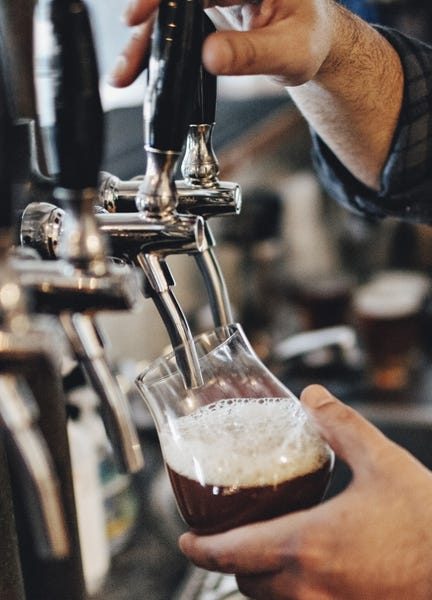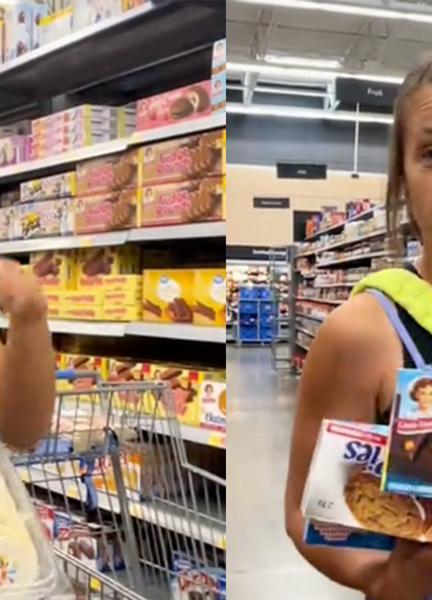Beer enthusiasts across the world swear that the experience of enjoying a draft pint is better than from any can or bottle. Properly pouring a beer on tap is a critical skill for any bartender. The relative freshness of the beer plus the real-time carbonation as it leaves the keg provides an experience unlike anything else.
But while the beer on tap might taste better, many of us can’t help wonder how clean the whole system really is at some establishments—and what possible hazardous (or just plain gross) contaminants a tap might be funneling into our glass. After all, we can’t see inside the tap from our seats, so is there any way for us to know for sure?
During my investigation, I consulted two experts—a food-safety professional and a restaurant bar manager—to get the low-down on tap beer. Here’s what you really need to know about the whole tap-beer system and how to tell if your beer is actually clean.
How Does A Bar Tap Get Contaminated?
The cleanliness of tap beer depends on more than the tap it flows from. It’s affected by the entire draft system that pumps the beer from keg to spigot, including the cleanliness of the cellar floor that the keg sits on and the beer lines run along. The lines have connection points where bacteria and mold from the cellar floor can enter the system.
According to Stephen Sommer, former assistant bar manager at Nomad London, “the two parts of the beer system that…build up residue the fastest are the floors of the cellar and the couplers,” or the pieces that join the air and beer lines to the keg. “These…tend to get overlooked.” So in reality, the cleanliness of the actual tap might be the least of your worries.
What Are The Main Contaminants In Draft Beer?
Many different types of residue can build up in an uncleaned draft system, and all that residue can show up in your beer. According to Katie Heil, content manager for food and beverage training at Certus, “if beer lines and taps aren’t cleaned regularly, they may dispense beer contaminated with yeast, mold, bacteria, and mineral deposits.” Some of these, like the mineral deposits, may actually manifest as visible particles floating in your pint glass. Others, like the bacteria or yeast, are completely invisible.
What Are The Health And Safety Guidelines For Bar Taps?
While the FDA may have strong guidelines for cleaning equipment like soft serve machines, they are suspiciously vague on the subject of beer-line cleaning. “Bars are required to clean beer lines “’at a frequency necessary to preclude an accumulation of soil or mold,’” says Heil, quoting from the FDA Food Code 2022. This nebulous recommendation leaves the field wide open for bars and restaurants to clean as often or as little as they want.
The Brewer’s Association is more specific, recommending that all beer lines be cleaned at least every two weeks. But the Brewer’s Association is not an enforcement agency, so in practical terms, this is nothing more than a strong suggestion. So just to be clear, there’s very little actual enforcement at work to ensure that someone is actually cleaning the beer lines regularly. No wonder people are nervous!
How Often Do Bars Clean Their Taps?
While beer-line cleaning is not strictly enforced, most bars still clean their lines on a fairly regular basis because they know that dirty lines can be bad for business. “Contaminated beer may develop an odd taste or odor that puts off customers,” says Heil. And even if the lines aren’t as clean as they should be, she says they still don’t pose a big health risk and that the contamination is “more likely to affect product quality rather than safety.” In other words, dirty beer may lead to a less enjoyable drink, but it won’t make you sick.
How Can You Tell If Your Draft Beer Is Contaminated?
While sitting at the bar, you couldn’t possibly inspect the whole beer system for contamination, but that doesn’t mean you can’t tell if there’s a problem. According to Sommer, beer from a dirty line will taste “flat even though it was just poured” and have uncharacteristic “musty or funky smells.”
If the line is dirty enough, the built-up residue may even start flaking off into your beer and you’ll see “little bits floating in your beer after it’s just been pulled.” This happens only in extreme cases, but even if the lines haven’t quite reached that point, you’ll still be able to tell by the flavor and lack of carbonation. In other words, even if you can’t see it, you’ll know when you taste it.
Expertise: Food science, plant-based food, baking, and pastry
Education: Culinary Arts degree from the Institute of Culinary Education, Bachelor in English with Writing and Theater from Hope College
About Me: As an assistant food editor at Delish, Taylor Ann has tested and developed dozens of recipes, styled numerous photo & video shoots, and writes feature stories specializing in health, food science, and safety. Her Delish feature, “8 Reasons You Should Never Eat Baby Carrots,” has been read by 1.1M people, and her recipes, such as my Frico fried eggs, grilled Brie, and spinach puffs, have garnered 2.4M views on TikTok & IG. Taylor Ann has received a Top Toque award from ICE and has previously worked as a cook, most notably at abcV in NYC, and as a freelance recipe developer, working with outlets such as Health eCooks and Feel Good Foodie. TA loves to explore new cities and regions of the world and is particularly passionate about exploring foreign grocery stores. When she’s not writing, cooking, or dreaming up new recipes to explore, she’s listening to podcasts, running in the park, or going for long walks with her husband.
See more at www.projectcookbook.org



